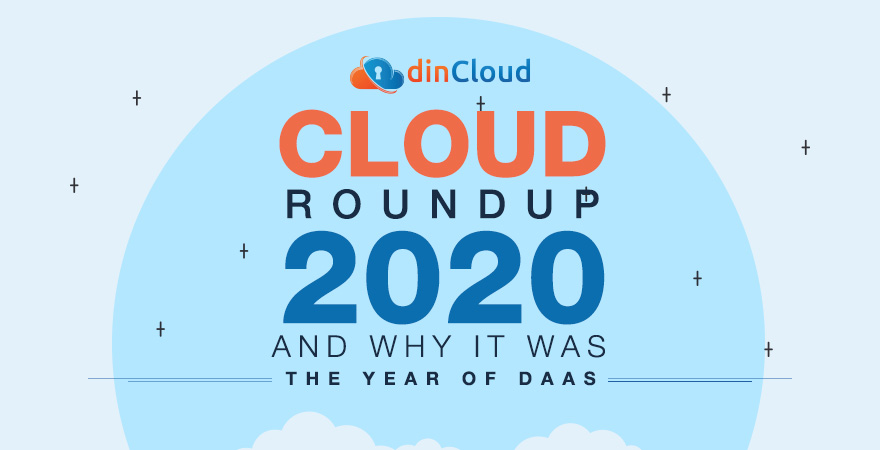As the year 2020 draws to an end, we can say that its been one hell of a year technologically. The Covid-19 pandemic has introduced us to technology in a whole new light. Technologies such as the Cloud have really made a key difference.

A Disruptive Pandemic Rocks the World
It was around the same time of 2019 when a disruptive pandemic was in the making. Initially, most of us considered this infectious disease as a temporary phase that would just come and pass. The reality however was totally the opposite.
Well into a year of this pandemic, we are seeing no substantial signs of recovery. We are hearing encouraging news on the front of vaccine development. This can provide the much needed protection from this deadly virus and we can hope for things to normalize.
Also Read: Why You Need to Re-Align Digitalization Goals in 2021?
Global Lockdowns and Businesses Shutting Down
When the pandemic went into full swing around the second quarter of 2020, things started getting from bad to worse really quickly. Governments that were initially critical of the idea of imposing lockdowns were left with no option but to follow suit.
This resulted in mass scale shutdown of businesses overnight. Unfortunately, this pandemic took millions of businesses completely by surprise. The little to no time afforded to businesses before lockdowns were enforced was just not enough to prepare.
Remote Work – The Only Viable Option
With lockdowns of global proportions, millions of businesses were faced with existential threats as they were no longer in a position to serve customers. While most businesses had to shut down, the ones powered by IT still had a silver lining called remote work.
Even as we write this post, remote work still remains the only viable alternative for thousands of businesses. However, to ensure a secure and productive remote work environment, you need a sound technology platform.
Also Read: The Multicloud – What are the Opportunities and Challenges?
Challenges of Makeshift Remote Work Solutions
During the initial days of Covid-19, most enterprises did not consider this remote work scenario to continue for too long. As a result, most businesses approached remote work as a temporary phase and planned accordingly.
Therefore, most entities resurrected temporary or makeshift remote work platforms for their employees working from home (WFH). Due to the many security gaps in such systems, most ill conceived remote work platforms became the victim of cyber attacks.
Also Read: dinCloud Hosted Workspaces – A Reliable and Secure Remote Work Platform
Cloud Hosted Virtual Desktops to the Rescue
In order to sustain a fully remote workforce over the long run, you need a technology platform that’s secure, productive, flexible and cost efficient. So, Cloud Hosted Virtual Desktops (HVD) came to the rescue of thousands of businesses globally.
These HVDs were offered by highly specialized third party Cloud Service Providers (CSP) like dinCloud. The HVD offering by dinCloud is called dinCloud Hosted Workspaces or dinHVD. It offers a fully virtualized Windows 10 Desktop experience with the latest apps.
dinHVDs proved a true lifesaver for countless businesses amidst this global pandemic. Remote employees were able to access their dinHVDs from the safety of their homes, without compromising on productivity or security.
dinCloud has secured its HVD offering by employing multi layered security. As most remote employees accessed data and apps from insecure networks or endpoint devices, cyber security was of paramount importance. Our solutions fully delivered on this promise.
Also Read: Outlook for the DaaS and VDI Market from Year 2020 to 2024
Conclusion
The year 2020 has been all about the Cloud. Innovative and flexible technologies such as dinCloud Hosted Virtual Desktops (dinHVD) have enabled businesses to serve customers via remote work. 2020 has truly been the “Year of DaaS”.
Contact dinCloud for secure, reliable and scalable Desktop as a Service (DaaS) Solutions that can prove an excellent platform to support a fully remote workforce.


